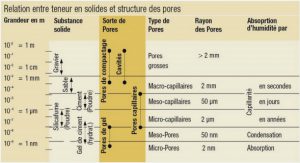EXPLORATION ET EVALUATION DES PERSPECTIVES STRATEGIQUES
POUR LES CONSTRUCTEURS OCCIDENTAUX
DESIGNING STRATEGY FOR THE GLOBALIZATION OF INNOVATION: PERSPECTIVES FOR FOREIGN ELECTRIC VEHICLE MANUFACTURERS IN CHINA
Cette partie est basée sur l’Article 2 de cette thèse. Abstract Despite efforts to deploy electric vehicles, sales from Western carmakers in China remain insignificant compared with domestic carmakers’. Although literature on the Chinese market, on innovation and on strategy for foreign multinational enterprises in China is abundant, it lacks specific research on strategic perspectives for foreign players experiencing the country’s complex and uncertain context. To tackle this empirical question, the paper proposes a novel analytical method through bridging the literature on strategy, innovation and the Chinese EV market. A “Strategic Opportunities Space” is developed to explore potential strategic paths. The application of this method to the Chinese EV case leads to defining 12 best-fit scenarios for Western car manufacturers. Our findings indicate that among the selected solutions, the still untapped low-cost approach to electric vehicles in China’s lower tier cities brings the highest value to foreign carmakers, while potentially being a favorable candidate for reverse innovation.From the perspective of Western carmakers in China, Electric Vehicles (EVs) are at the same time disruptive innovations and globalized products. In China, EVs are concurrently consumer products and heavily prescribed by the authorities. The Chinese government deploys a strong national EV strategy and Western players are designated competitors. In this context, foreign carmakers struggle to sale their models, despite higher success rates in other market. This paper, tackling this empirical issue, aims at framing strategic perspectives for foreign electric vehicle makers in China by developing a novel analytical method that builds, explores and prioritizes various strategic opportunities, bridging complementary streams of literature and taking into account China’s specificities and complex electric vehicle market dynamics. 140 China, the key market for electric vehicles? China became the largest automotive market in the world in 2009. At around 100 vehicles per 1000 inhabitants and with a population of nearly 1,4 billion people, potential for vehicle ownership remains immense but raises concerns. Three main drivers are behind the Chinese government’s commitment to developing electric vehicles: 1) find a solution to air pollution in Chinese cities, a public health issues and today’s number one cause of social unrest before land disputes, 2) lower the country’s fast-growing reliance on oil imports and 3) leapfrog Western carmakers after decades as a follower in the ICE (Internal Combustion Engine) vehicle business.On the one hand, the official market’s data shows that China is leading the EV race with 188 700 passenger New Energy Vehicles (NEVs) sold in 2015 .including Battery EVs (BEVs), Plug-in Hybrid EVs (PHEVs) and Fuel Cell EVs (FCEVs). But these results fall short of the country’s objective of 5 million NEVs sold by 2020. On the other hand, a vast but little-known market of nearly a million unofficial Micro EVs59, allowed at local levels but illegal at the central government level, is on the verge of being legitimized by the country. Our analysis (Chen and Midler, 2016a) and typology of the market (Fig. 55), covering the period from 2009 to the first quarter of 2015 and bringing in the same picture official and unofficial markets, shows the significant contribution from the bottom of the market to China’s impressive results.
Electric vehicles, key to the business-as-usual
Despite such a competitive and protectionist environment, China’s EV market remains strategic for Western generalist OEMs not only for its sales potential but also in reaction to increasingly stringent national emissions regulations on ICE vehicles. EVs even prove to be vital to OEMs’ ICE vehicle business. The Chinese Corporate-Average Fuel Consumption emission regulation (CAFC) intends to regulate the average emissions of joint ventures’ total vehicle production (ICE vehicles + EVs), with a target of 5 L/100 km in 202060. Under this plan, the CAFC considers the electric range of BEVs and PHEVs (with >70 km range) as zero CO2 emissions. Sales volumes matter, as EVs are considered as multiple vehicles in the compliance calculation, set at five units in 2016-2017, three in 2018-2019 and two in 2020. The more EVs are sold, the more OEMs can sell conventional cars in the largest automotive market in the world. In light of this context, we aim at providing elements of answer to this empirical question: How to design electric vehicle strategies for foreign electric vehicle makers in China? On the theoretical level, we develop an original framework for strategy design in a double uncertainty context: innovative products and uncertain markets. This paper is structured as follows. The first section builds on the literature on strategy, on innovation and on the Chinese EV market to characterize the design issue and identify variables that are strategic to our analysis. In the second section, we present a theoretical framework of a novel analytical approach to strategy exploration. In the third section, we apply our theoretical framework to the case of Western EV makers in China. The results of our analysis are discussed in the fourth section. Empirical data in this research are collected through an on-going interventional joint PhD research (CIFRE) on Strategies and Management of Innovations’ Globalization: the Case of Electric Mobility in China, between the authors at the CRG Management Research Center of the École polytechnique and Renault’s EV Product Department at the Renault Technocentre in Guyancourt, France. Five field missions in China between April 2013 and January 2016 have been carried out. This work also benefits from 2 years of research exchanges with the Center for Automotive Industry, School of Automotive Studies, Tongji University in Shanghai, China.






